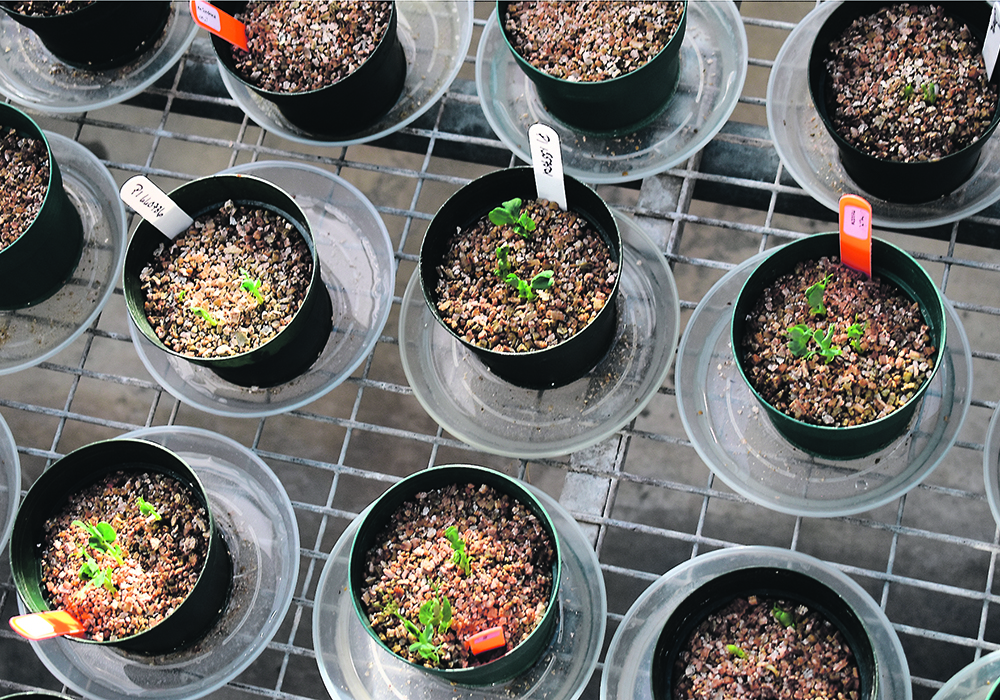Alberta government formed Research Driven Agriculture Research to manage agricultural research in the province
Measuring success — and charting a course for success in the future — is never an easy task, even for the smallest business or organization.
But when you’re a new organization in charge of administering nearly 400 million tax dollars over the next decade, measuring success takes on a whole new level of importance and complexity.
That’s one of the jobs that Edmonton-based RDAR (Research Driven Agriculture Research) is hoping to tackle in the coming months.
The non-profit, farmer-directed entity is looking for ways to measure its success and determine how its efforts have benefitted the province’s agriculture and agri-food sectors.
Read Also

Manitoba extends Crown land rent freeze
Manitoba government links the continued rental rate freeze on grazing and forage leases to economic and environmental challenges facing the industry
“We are very much a young organization,” said RDAR research program officer Nancy Tout, who spoke recently during a Farm Forum event hosted by Glacier FarmMedia.
“We do have momentum building, but it’s a great exercise to ask ourselves the question very early on: What does that success look like for our industry and more importantly, how do we work together (with producers and partners in the private and public sectors) to achieve that success?”
RDAR is the offshoot of the Alberta government’s controversial decision to hand administrative responsibilities for ag research funding over to a non-governmental organization.
It is tasked with determining Alberta’s ag research priorities and allocating $37 million a year over a 10-year period to research projects that benefit primary producers and others in the province’s agriculture and agri-food sectors.
In a recent presentation during Farm Forum, Tout said RDAR has already allocated about $34 million to 146 research projects.
Those funding decisions were made between January and October, 2021.
A list of research projects that received funding can be viewed on the organization’s website at rdar.ca.
More than 100 additional proposals are currently under consideration.
RDAR now has 12 full-time staff members in place, all working remotely, but the organization is looking forward to occupying permanent office space in Edmonton.
Operating costs account for about six percent of the organization’s total revenues.
The creation of RDAR has not been without controversy.
The announcement that RDAR would take over responsibility for ag research funding decisions coincided with the elimination of about 250 positions in Alberta’s Agriculture and Forestry department, about 135 of those in the primary agriculture sector.
Some of those positions have been relocated to other research organizations, including Alberta colleges and universities, but some concerns remain about long-term funding stability and research continuity.
Tout said RDAR will continue to consult with Alberta’s crop and livestock producers through a variety of channels, in hopes of setting research priorities that resonate with farmers, ranchers and other industry stakeholders.
The organization has a new board of directors that includes representation from across the ag sector.
The board is chaired by David Chalack, who is well known in the province’s meat and livestock industries.
The vice-chair is Melissa Downing, a fourth generation farmer, agrologist and provincial co-ordinator of the Verified Beef Production Plus program.
RDAR’s mandate is to support agricultural research that enhances the productivity, profitability and competitiveness of the province’s ag sector.
It plans to do that by investing research dollars in four priority areas that include productivity and profitability, sustainability, marketing, and knowledge transfer.
Producer leadership and collaboration are keys to delivering the organization’s mandate, she added.
So too is measuring success and building an infrastructure that ensures the well-being of the industry in the future.
“Producers, in collaboration with other partners… are better positioned than government officials to determine research priorities,” Tout said.
“We want to be future driven in our investments,” she added.
“We want to set the industry up for success in the future, so (that means) being quite bold in our investments going forward.”
According to Tout, RDAR’s first full year of operation has been interesting not only because the organization’s mandate is so unique and challenging but also because RDAR’s start-up efforts coincided with a global pandemic.
“All of what we’ve accomplished has been through virtual engagement,” she said.
“We’ve had tremendously positive feedback on our first year and (we have) great momentum heading into the next year, but … we’re only getting started.”
The organization recently embarked on a new strategic planning process and is preparing to hold its inaugural annual general meeting in January.
Measuring success and building a lasting legacy are among the organization’s priorities.
Success can be measured in many ways, ranging from the number of projects funded, to sector productivity or organizational reputation, Tout suggested.
“How are we going to measure ourselves to understand if we’ve been successful?” she asked.
“We’re really leaning toward an outcome-based measurement.”
















